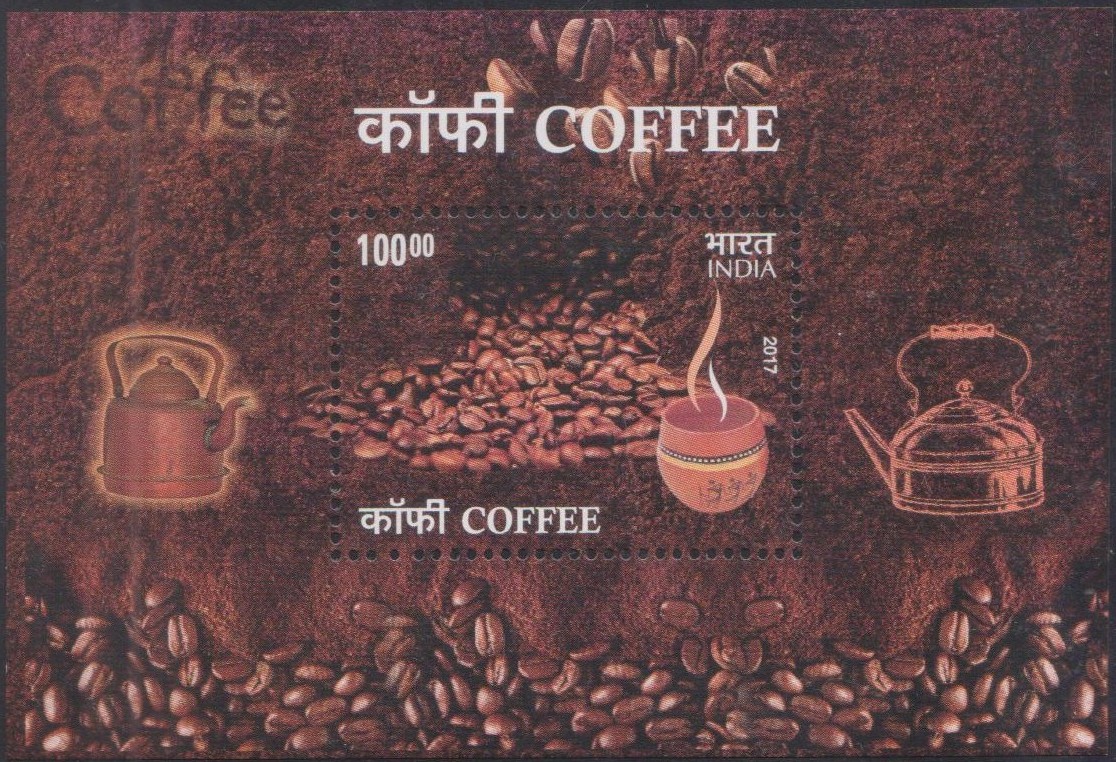
Indian Coffee
A Souvenir Sheet consisting of 1 no. of commemorative postage stamp on the Coffee of India :

 Issued by India
Issued by India
Issued on Apr 23, 2017
Issued for : Department of Posts is pleased to issue a Commemorative Postage Stamp on Coffee as a fragrance stamp.
Credits :
Miniature Sheet/FDC/Brochure/Cancellation Cachet : Smt. Alka Sharma
Type : Miniature Sheet, Mint Condition
Colour : Multi Colour
Denomination : 10000 Paise
Miniature Sheet Printed : 0.2 million
Printing Process : Wet Offset
Printer : Security Printing Press, Hyderabad
About :
- Coffee is one of the important beverage crops of the world. Coffee is prepared from the seeds of the fruit obtained from the plant. The plant is 3-6 metres in height. It is native to the highlands of southern Ethiopia. Its name has been derived from a highland district of Kaffa, where it was originally grown. From here, it was taken to Yemen, on the south-western parts of Arabia by the Arab traders and was grown at Mocha in 575 A.D. Later from Arabia, coffee plants were taken to other parts of the world, where they were successfully grown. Today, many countries have become major producers of coffee. Coffee has come up as a popular drink for the people across the world.
- Coffee is a tropical plant. It can grow in the region around the equator due to its tropical climate. This region includes Central America, Northern South America, Africa, the Middle East, India and Indonesia. Coffee plants need warm climate and a moderate supply of moisture for its growth.
- The two main species of coffee are Arabica and Robusta. Coffee Arabia is grown in Yemen. Arabica is descended from the original coffee trees discovered in Ethiopia. These trees produce a fine, mild, aromatic coffee and represent approximately 70% of the world’s coffee production. The beans are flatter and more elongated than Robusta and lower in caffeine. It is of excellent flavour, aroma and taste.
- Robusta is primarily used in blends and for instant coffees. The Robusta bean itself tends to be slightly rounder and smaller than an Arabica bean. Robusta coffee packs 50% more caffeine, and a sharp bitter flavour. This is one reason why Arabica coffee is the more desirable of the two.
- Coffee is the second important beverage crop of India. It was during 18th century that the commercial plantations of coffee were started by the British entrepreneurs. The constraints of agro-climatic environments have forced coffee plantations to be in a small area. It is grown under a canopy of thick natural shade in ecologically sensitive regions of the Western and Eastern Ghats. This is one of the 25 biodiversity hotspots of the world. Coffee contributes significantly to sustain the unique bio-diversity of the region and is also responsible for the socio-economic development in the remote, hilly areas.
- The state of Karnataka dominates in coffee production, followed by Tamil Nadu and Kerala. Coffee is also being grown in Andhra Pradesh, Odisha and North Eastern States.
- The coffees of India are a diverse range of 16 coffees. Grown in different regions, at various elevations, nourished by many different soils and tended to by loving hands of various kinds of people, it is not surprising that the coffees are so different from each other.
- Coffee in India has traditionally been a staple beverage of southern states. Coffee making in these places has taken the form of a fine art and the traditional way of preparing coffee from coffee beans is much respected. However, with the size of instant coffee, its consumption has become more widespread where it is replacing tea as a regular beverage. Increasing global exposure has brought different varieties of coffee in the market. Thus, a cup of aromatic brew connects us to the millions of coffee lovers across the world.
- Text : Based on the material available on internet.


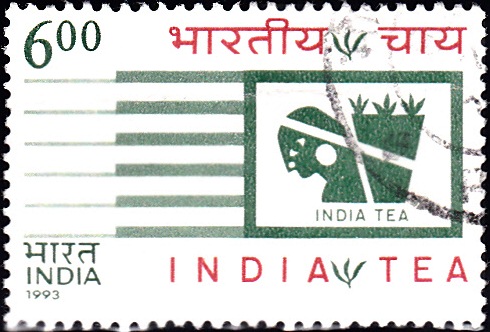
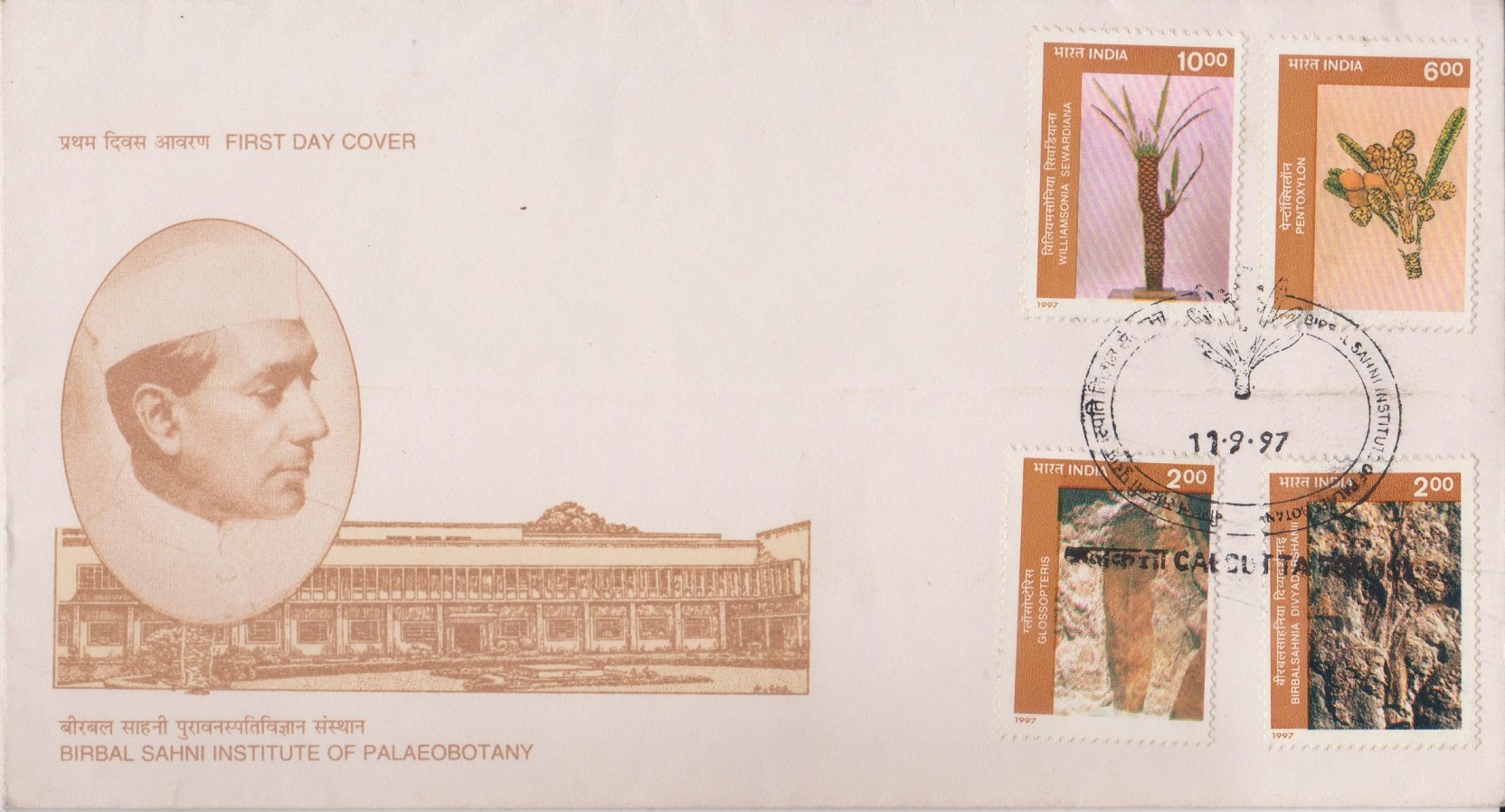
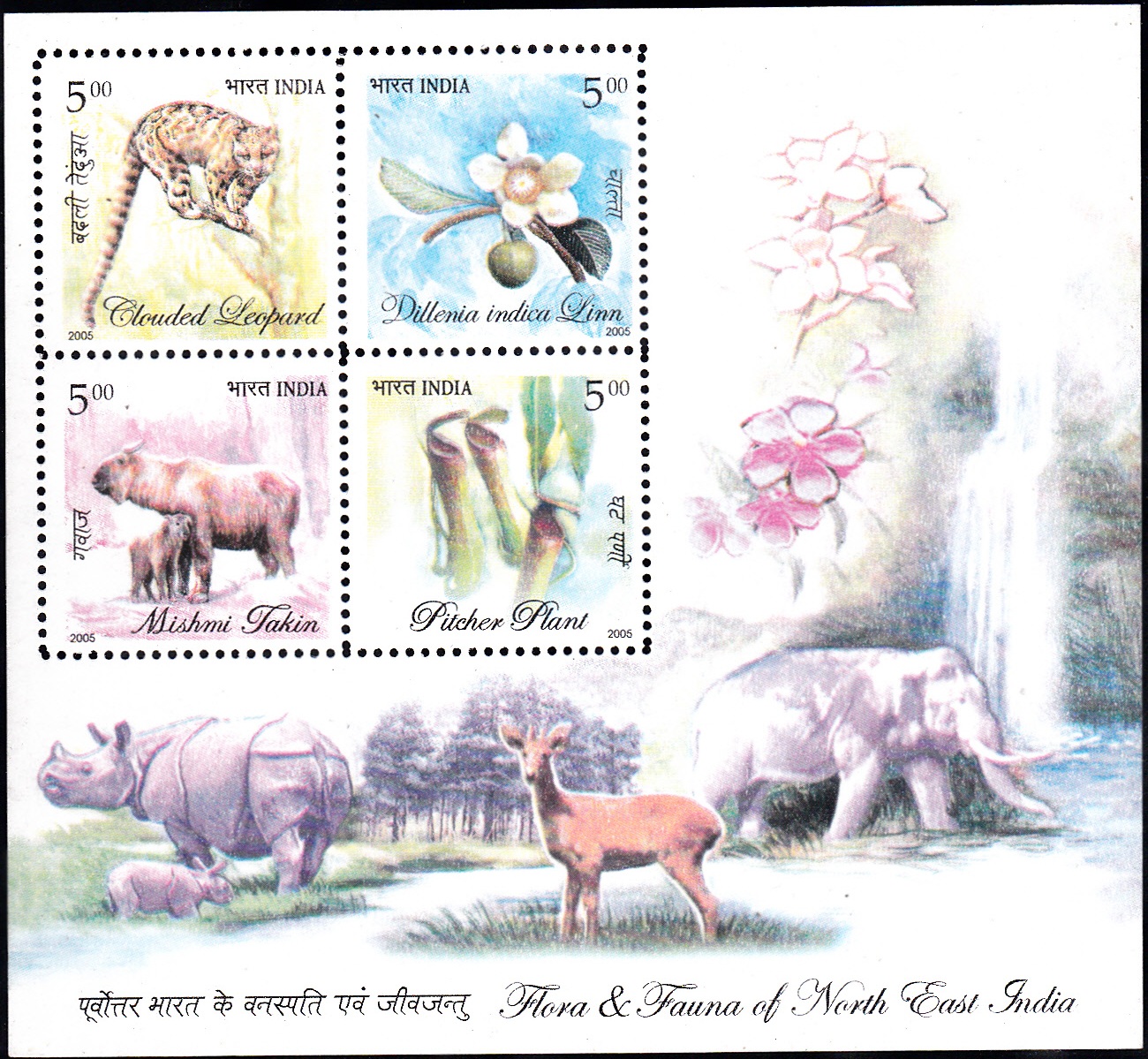

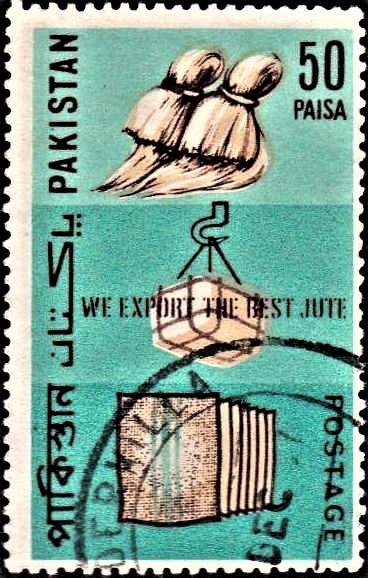

[…] shola forests with dense undergrowth (bamboo and rattan) and plenty of leaf-litter, cardamom and coffee plantations, and moist thickets in ravines from 700 m to the highest summits. It forages low down […]
[…] during the British rule in India and Sri Lanka. During the 1830s, Indian Origin Tamils working in coffee estates were not provided with wages. Instead, they were asked to trade coffee beans gathered by […]